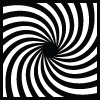Subtotal: $50 USD
ValhallaShimmer Tips and Tricks: Diffusion
In the next week, I will be posting some Tips and Tricks for ValhallaShimmer, to help users dial in the sounds they want. The Diffusion parameter is a great place to begin, as it is one of the most powerful parameters in ValhallaShimmer.
I’ll start from more of a “meta” perspective, and quote Wikipedia: Diffusion, in acoustics and architectural engineering, is the efficacy by which sound energy is spread evenly in a given environment. In the case of ValhallaShimmer, the environment is the plugin. The Diffusion control allows the user to shape how energy from an input signal leaves the plugin. At low settings of diffusion, all of the energy that enters the plugin leaves it at about the same time (i.e. a single delay line). At higher settings of diffusion, the energy is more spread out over time and frequency, with randomization of phase. This is perceived by the listener as sounding reverberant.
From a less physics oriented perspective, the Diffusion control is used to adjust the degree of echo density in ValhallaShimmer. At its lowest setting, Shimmer acts like a delay line (actually 2 delay lines, one per channel, with slightly different lengths). Turn up the feedback for the stereo modes, and the plugin acts like a ping-pong delay.
Once you turn up Diffusion beyond 0.0, the echo density starts to increase. For settings around 0.2 or lower, the increased echo density is fairly subtle for a single repeat of the delay. If you increase the Feedback setting, the first repeat will sound close to a single echo, but later repeats will sound more and more reverberant.
At Diffusion settings around 0.5, the signal will have a fairly high amount of echo density. However, the energy will still be distributed in such a way that short repeats will still have an audible repeating echo. Setting Diffusion at 0.5, and Feedback at 0.5 or greater, is a great way to get the “Bloom” sound from the Midiverb II.
A Diffusion setting of 0.618 has some very unique characteristics. 0.618 is known as Phi (Φ), or 1/goldenRatio. With diffusion set at 0.618, the attack and decay of the reverb signal have the same lengths. The reverb response looks like a Gaussian, or bell curve. This produces a neat “backwards” reverb sound.
If Diffusion is set to values greater than 0.618, the decay characteristics start becoming closer to an exponential decay. The reverb will still “fade in” to a greater or lesser extent, but the decay will be far longer than the attack. In addition, the decay time itself increases. With a Diffusion setting of 0.8 to 0.91, you can get some very long reverb decays, even with Feedback gains of 0.0. Turn up the Feedback, and the reverb decay time gets closer and closer to infinity.
Diffusion settings above 0.91 start to sound weird. The decay lasts longer and longer, but the reverb itself gets quieter and quieter. The explanation for this is that the Diffusion control doesn’t add any energy to the signal – it just redistributes it. So the super long decays come at the expense of quieter signals, as the reverb is taking the same energy and spreading it too thin. This is why the Feedback control is useful for long signals, as it adds gain to the system.
A few other quirks about the Diffusion control in ValhallaShimmer:
- For higher levels of Diffusion, the sound can become somewhat more metallic, especially for smaller settings of Size. This is fairly common with reverbs that use diffusor sections as their main building blocks. Modulation is the quickest way of reducing metallic artifacts. Another way of getting a similar reverb time with less metallic coloration is to turn Diffusion down, and Feedback up.
- Higher settings of Diffusion also increase the perceived chorusing in the algorithm (as will smaller settings of Size with the same modulation speed/width).
- The Diffusion control is smoothed, in order to avoid clicks when changing the Diffusion amount.
 Valhalla UberMod
Valhalla UberMod 



Nicely informative post… Really enjoying getting more info about Shimmer. Good way to parce information to the user.
Did you install snow on this website?
I installed snow last year. It was snowing here last week, so I tried to figure out how to get it going, but I couldn’t find any info. It is nice to see it snowing again.
Eventually, I will put all of the Shimmer posts into a proper PDF document. I figured that I might as well write it on the blog, whenever I have a few minutes free.
Really good documentation of a quite rare effect, the only plugins I know with this feature is TAL-Reverb-3, AirDiffusionDelay and of course ValhallaShimmer. Great read.